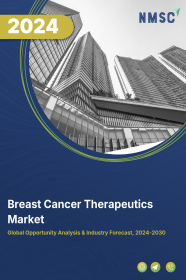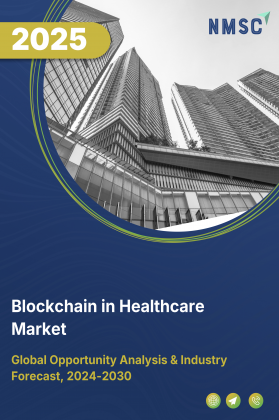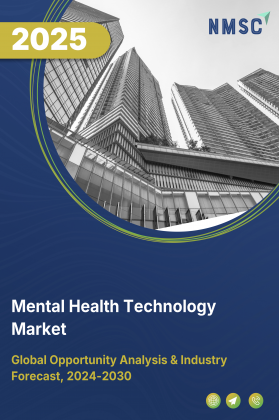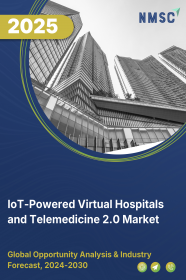
Breast Cancer Therapeutics Market by Cancer Type (Hormone Receptor and HER2+), by Therapy (Radiation Therapy, Targeted Therapy, Hormonal Therapy, Chemotherapy, Immunotherapy, and Others), by Distribution Channel (Retail Pharmacies, Hospital Pharmacies, Online Pharmacies, and Others), and by End-Users (Hospitals, Cancer Research Organizations, Specialty Clinics, Ambulatory Centers, and Others) - Global Opportunity Analysis and Industry Forecast 2022-2030
Market Definition:
The global Breast Cancer Therapeutics Market size was valued at USD 27.25 billion in 2021 and is predicted to reach USD 58.70 billion by 2030 with a CAGR of 8.9% from 2022-2030. Breast cancer refers to the abnormal growth of cells developed in breast tissue.
Some signs of breast cancer are lumps in the breast, change in the shape of a breast, dimpling of the skin, discharge of fluid from the nipple, newly inverted nipple, or red or scaly patches on the skin. Breast cancer therapeutics refers to the treatment or management of breast cancer through therapeutical approaches or drugs such as targeted therapy, chemotherapy, radiation therapy, hormonal therapy, and immunotherapy.
These therapeutics block the growth and multiplication of cancer cells by breaking it into certain molecules such as proteins or DNAs. The treatment of breast cancer depends upon various factors such as the stage of the cancer, size of the tumor, type of breast cancer, and grade of cancer cells.
Market Dynamics and Trends
The widespread of breast cancer patients across the globe along with better and more efficient treatment of cancer by doctors have been driving the growth of the breast cancer therapeutics market. For instance, according to Globocan about 2,261,419 new cases of cancer were reported across the world in 2020, which contributes to about 11.7% of the total cancer population of the world.
Also, growing awareness about the benefits of preventive measures at an early-stage early stage has compel compelled patients to undergo cancer screening tests, which in turn is expected to propel the growth of the breast cancer therapeutics market. Moreover, advancements in the breast cancer therapeutics such as improved imaging techniques, bone-directed treatments, and nanotechnology, are also expected to propel the growth of the breast cancer therapeutics market during the forecast period.
However, side effects such as headache, dental issues, numbness, and osteoporosis due to breast cancer therapeutics, as well as the high cost of treatments and drugs are factors restraining the growth of the breast cancer therapeutics market. On the contrary, increasing education programs conducted by the NGOs in several platforms including schools and colleges, and other institutions are expected to create ample growth opportunities for the market industry players in the coming years.
Market Segmentations and Scope of the Study
The breast cancer therapeutics market is segmented on the basis of cancer type, therapy, distribution channel, end-users, and geography. On the basis of cancer type, the market is divided into hormone receptor receptors and her2+. On the basis of therapy, the market is classified into radiation therapy, targeted therapy, hormonal therapy, chemotherapy, immunotherapy, and others. The radiation therapy is further classified into herceptin, tykerb (lapatinib), afinitor, and others. The targeted is further classified into Abemaciclib, ado-trastuzumab emtansine, everolimus, trastuzumab, ribociclib, Palbociclib, pertuzumab, Olaparib and others. The hormonal therapy is further classified into selective estrogen-receptor modulators (SERMs), aromatase inhibitors, and estrogen receptor downregulation (ERDs). The chemotherapy is further classified into taxanes, anthracyclines, anti-metabolites, alkylating agents, and epothilones. On the basis of distribution channels, the market is categorized into retail pharmacies, hospital pharmacies, online pharmacies, and others. On the basis of end-users, the market is segmented into hospitals, cancer research organizations, specialty clinics, and ambulatory centers. Geographic breakdown and analysis of each of the aforesaid segments include regions comprising North America, Europe, Asia-Pacific, and RoW.
Geographical Analysis
North-America holds the lion share of the breast cancer therapeutics diagnostics market size at present. This is attributed to factors such as the presence of prominent market players such as Genentech, Eli Lilly and Company, and Pfizer Inc. which are constantly innovating new technologies related to breast cancer therapeutics in this region. Also, the rapid increase in the number of cancer patients in recent times in this region is also propelling the market demand. For instance, according to the Breast Cancer Organizations statistics, breast cancer affected more than 3.8 million American women, as of January 2022. This constitutes around 30% of the newly diagnosed cancers cancer cases among women.
However, Asia-Pacific is expected to show a steady rise in the breast cancer therapeutics market due to the rising government initiatives and programs being arranged in order to create awareness regarding breast cancer. For instance, in November 2020, the Indian government announced an operational framework for the country’s first national breast cancer screening program for the age group over 30 in 100 districts in 21 states that include West Bengal, Uttar Pradesh, Tamil Nadu, and others. The government is also planning to further expand this program into more districts and villages. Also, economic growth and improvements in the healthcare sector in countries such as India, China, and Indonesia are expected to further drive the growth of the breast cancer therapeutics market share in this region.
Competitive Landscape
The breast cancer therapeutics industry market comprises of various market players such as AstraZeneca, Merck Sharpe and Dohme, Novartis AG, F. Hoffmann-La Roche, Pfizer Inc, Merck & Co. Inc, Eisai Co. Ltd, Eli Lilly & Co, BMS, Natco Pharma, Sanofi, and Eisai Co Ltd. These market players are adopting various strategies such as collaboration and product development to maintain their dominance in the breast cancer therapeutics market.
For instance, in November 2021, AstraZeneca and MSD's supplemental New Drug Application (sNDA) for Lynparza (olaparib) was allowed Priority Review in the U.S., for the adjuvant therapy of patients enduring with BRCA-changed (BRCAm) HER2-negative high-risk early bosom malignant growth. Lynparza is right now being mutually evolved and marketed by AstraZeneca and MSD. This coordinated effort assisted both the organizations acquire competitive edge and fortify their market position. Moreover, in September 2021, Novartis has collaborated with SOLTI Innovative Cancer Research (SOLTI) on HARMONIA, which is a phase III study evaluating Kisqali versus Ibrance in patients with HR+/HER2 advanced breast cancer.
Key Benefits
-
The breast cancer therapeutics market report provides the quantitative analysis of the current market and estimations through 2022-2030 that assists in identifying the prevailing market opportunities to capitalize on.
-
The study comprises a deep dive analysis of the breast cancer therapeutics market trend including the current and future trends for depicting the prevalent investment pockets in the market.
-
The information related to key drivers, restraints and opportunities and their impact on the breast cancer therapeutics market is provided in the report.
-
The competitive analysis of the market players along with their market share in the breast cancer therapeutics market.
-
The SWOT analysis and Porters Five Forces model is elaborated in the study.
-
Value chain analysis in the market study provides a clear picture of the stakeholders’ roles.
Breast Cancer Therapeutics Market Key Market Segments
By Cancer Type
-
Hormone Receptor
-
HER2+
By Therapy
-
Radiation Therapy
-
Herceptin
-
Tykerb (Lapatinib)
-
Afinitor
-
Others
-
-
Targeted Therapy
-
Abemaciclib
-
Ado-Trastuzumab Emtansine
-
Everolimus
-
Trastuzumab
-
Ribociclib
-
Palbociclib
-
Pertuzumab
-
Olaparib
-
Others
-
-
Hormonal Therapy
-
Selective Estrogen Receptor Modulators (SERMs)
-
Aromatase Inhibitors
-
Estrogen Receptor Downregulators (ERDs)
-
-
Chemotherapy
-
Taxanes
-
Anthracyclines
-
Anti-Metabolites
-
Alkylating Agents
-
Epothilones
-
-
Immunotherapy
-
Others
By Distribution Channel
-
Retail Pharmacies
-
Hospital Pharmacies
-
Online Pharmacies
-
Others
By End-Users
-
Hospitals
-
Cancer Research Organizations
-
Specialty Clinics
-
Ambulatory Centers
-
Others
By Geography
-
North America
-
U.S
-
Canada
-
Mexico
-
-
Europe
-
UK
-
Germany
-
France
-
Italy
-
Spain
-
Rest of Europe
-
-
Asia-Pacific
-
China
-
India
-
Japan
-
South Korea
-
Australia
-
Rest of Asia-Pacific
-
-
RoW
-
UAE
-
Saudi Arabia
-
South Africa
-
Brazil
-
Remaining Countries
-
Key Players
-
AstraZeneca
-
Merck Sharpe and Dohme
-
Novartis AG
-
F. Hoffmann-La Roche
-
Pfizer Inc
-
Merck & Co. Inc
-
Eisai Co. Ltd
-
Eli Lilly & Co
-
BMS
-
Natco Pharma
-
Sanofi
-
Eisai Co Ltd
REPORT SCOPE AND SEGMENTATION:
|
Parameters |
Details |
|
Analysis Period |
2021–2030 |
|
Base Year Considered |
2021 |
|
Forecast Period |
2022–2030 |
|
Market Size Estimation |
Billion (USD) |
|
Market Segmentation |
By Cancer Type (Hormone Receptor and HER2+), by Therapy (Radiation Therapy, Targeted Therapy, Hormonal Therapy, Chemotherapy, Immunotherapy, and Others), by Distribution Channel (Retail Pharmacies, Hospital Pharmacies, Online Pharmacies, and Others), and by End-Users (Hospitals, Cancer Research Organizations, Specialty Clinics, Ambulatory Centers, and Others) |
|
Geographical Segmentation |
North America (U.S., Canada, Mexico) Europe (UK, Germany, France, Italy, Spain, Rest of Europe), Asia-Pacific (China, India, Japan, South Korea, Australia, Rest of Asia-Pacific), Rest of the World (UAE, Saudi Arabia, South Africa, Brazil, Remaining Countries) |
|
Companies Profiled |
AstraZeneca, Merck Sharpe and Dohme, Novartis AG, F. Hoffmann-La Roche, Pfizer Inc, Merck & Co. Inc, Eisai Co. Ltd, Eli Lilly & Co, BMS, Natco Pharma, Sanofi, and Eisai Co Ltd. |




















 Speak to Our Analyst
Speak to Our Analyst

























